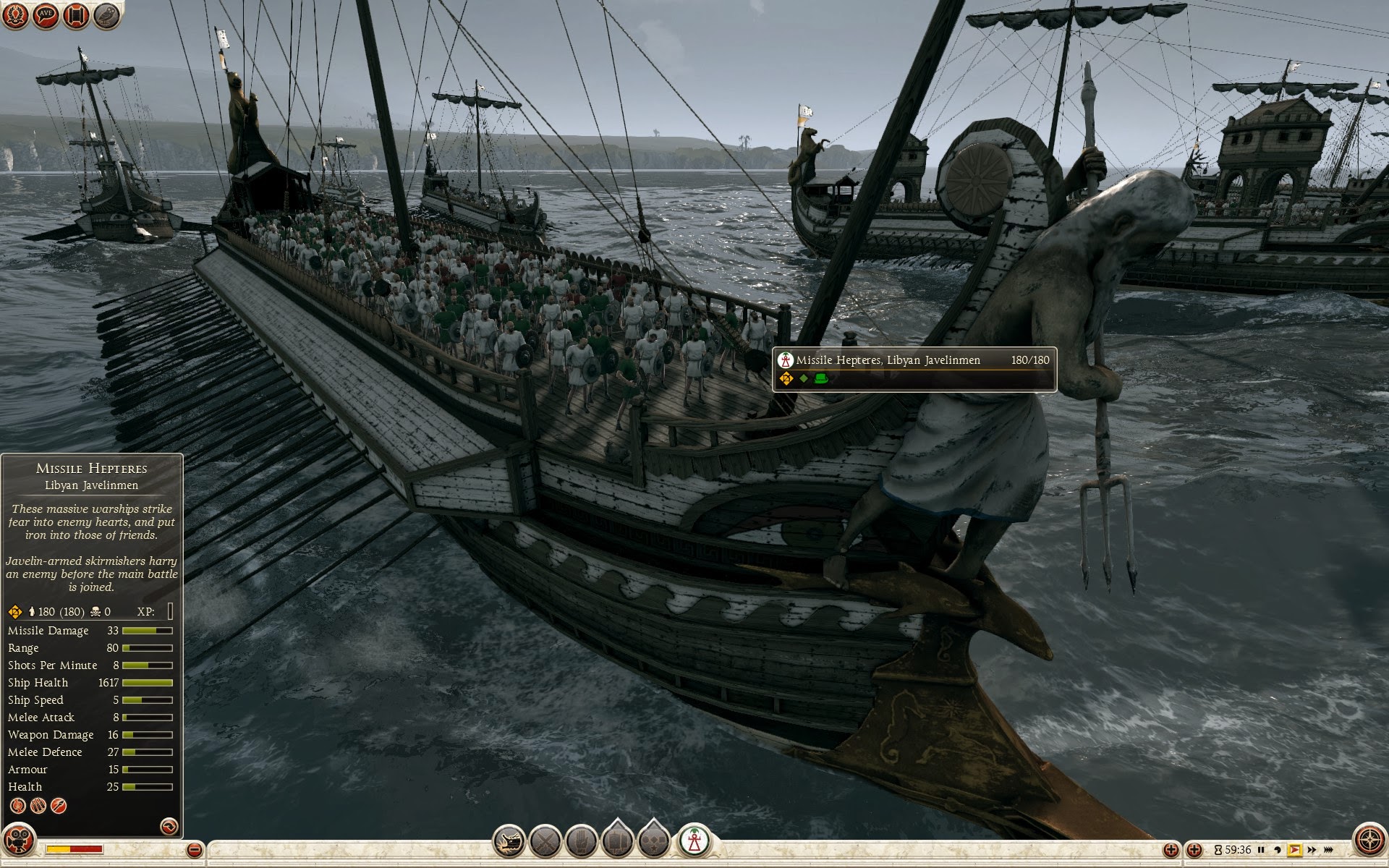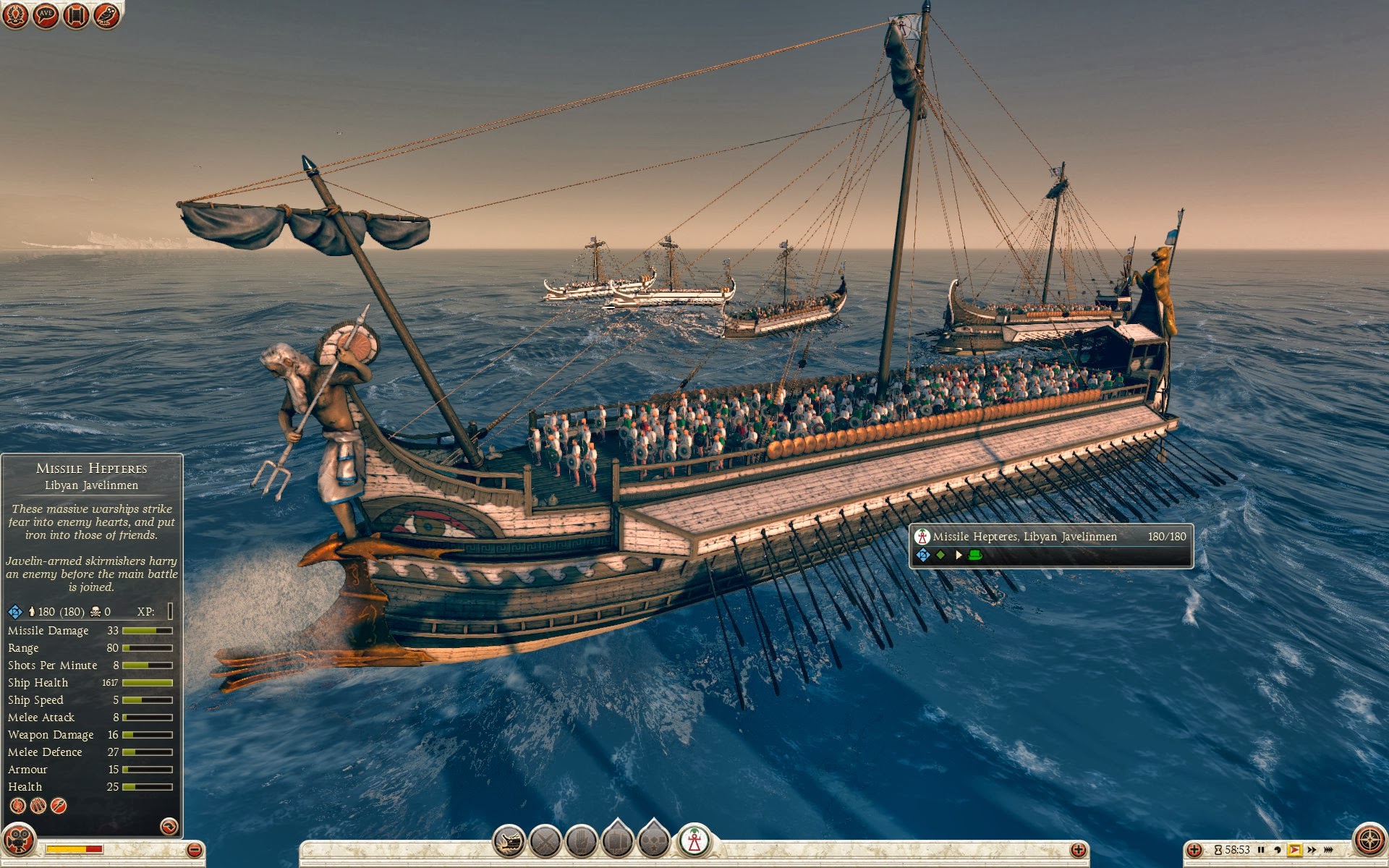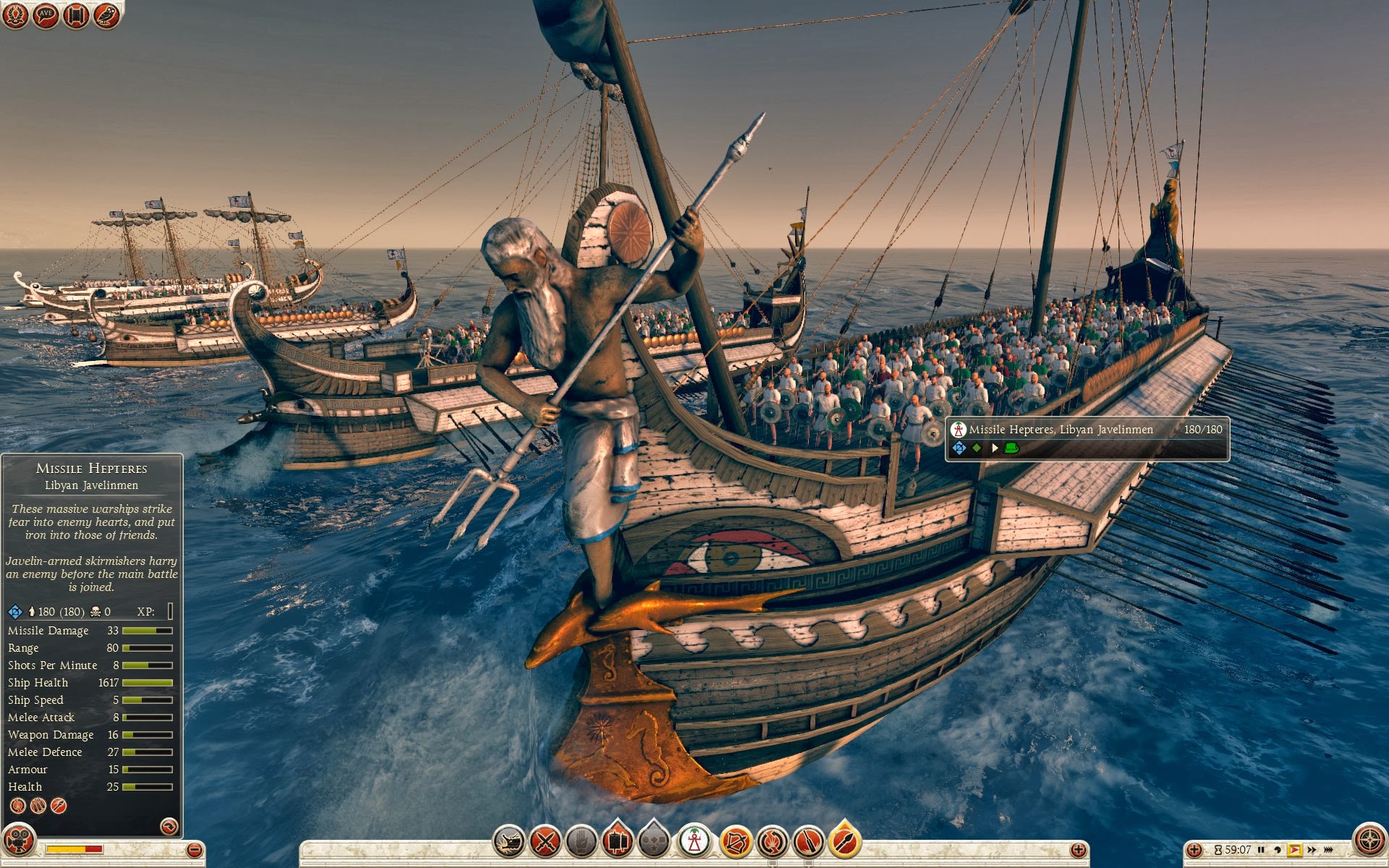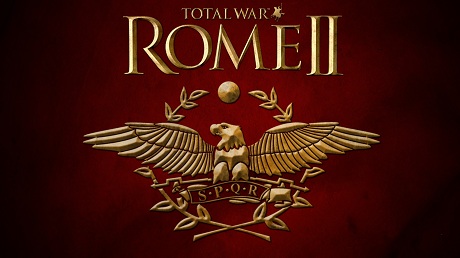Missile Hepteres - Libyan Javelinmen
These massive warships put iron into their crews' hearts, and strike fear into the enemy's.Javelin-armed skirmishers harry an enemy before the main battle is joined.
An arms race in warship size developed between the various nations around the Mediterranean. Size, in terms of the number of rowers, ships length and bulk and above all majesty of the vessel became as much a tool of statecraft as of warfare. A people who could afford such ships were almost certainly rich enough to withstand the strains of any war. A 'four' or quadreme was still a handy warship, able to manoeuvre in battle. The same could not be said of some of the large polyremes, a word meaning many oars. Practical archaeology shows that too many banks of oars simply don't work, so polyreme probably referred to the number of rowers: an octeres is likely to have had some eight rowers per bank of three oars, arranged in three, three, and two to an oar going up from the waterline. King Demetius of Macedon led his fleet at the battle of Salamis in 306BC from the deck of a hepteres or 'seven', but his ambitions didn't stop there. Neither did those of other kingdoms, and later lumbering warships including 'elevens', 'thirteens' and larger. As bigger ships to carry more rowers such vessels could also carry big marine contingents, arrow towers and an array of useful artillery.
(Libyan Javelinmen)
The javelin is among the oldest weapons in the world. Equipped with javelins and little else, skirmishers harried their opposite numbers and peppered hoplite phalanxes before quickly retreating. This was the typical tactic of all unarmoured, javelin-armed troops: to engage at range and then fall back behind more heavily-armoured infantry, or continue attacks while trying to stay just out of reach of the enemy. Such harassment could be highly effective, in 391BC at the Battle of Lechaeum, a force of Spartans, lacking the support of skirmishers or cavalry, were severely punished by javelin-armed Athenians who refused to meet them at close quarters. Over time, shields became common, such as those used by Thracian and Greek peltasts, but in turn these were rendered obsolescent by the Hellenic thureophoroi. Nevertheless, javelinmen and other irregulars continued to play a part in many armies throughout antiquity.
日本語化: JapanTotalWarとは
Unit Name Missile Hepteres - Libyan Javelinmen |
Main Unit Key Car_Javelin_Seven |
Land Unit Key Car_Libyan_Javelin |
Naval Unit Key greek_seven |
Soldiers 180 |
Category Heavy Ship |
Class 飛び道具艦 |
Custom Battle Cost 1110 |
Recruitment Cost 1110 |
維持費 222 |
Missile Damage 32 |
├ Missile Weapon rome_javelin |
├ Projectile javelin_normal |
├ Missile Damage 20 |
├ Missile Ap Damage 12 |
└ Base Reload Time 10 |
Accuracy 5 |
Range 80 |
Reload 13 |
Shots Per Minute 7 |
Ammunition 7 |
Ship Health 1617 |
└ Ship greek_seven |
Ship Speed 5 |
Melee Attack 8 |
Weapon Damage 24 |
├ Melee Weapon rome_shortsword |
├ Melee Damage Base 20 |
├ Melee Damage Ap 4 |
├ Armour Piercing No |
├ Bonus vs. Large 0 |
├ Bonus vs Elephants 0 |
└ Bonus vs Infantry 0 |
Charge Bonus 3 |
Melee Defence 37 |
├ Base Defence 12 |
├ Shield pelta |
└ Shield Defence 25 |
Armour 15 |
├ Armour cloth |
├ Armour Defence 10 |
└ Shield Armour 5 |
Health 45 |
├ Man Entity rome_infantry_very_light |
├ Man Health 40 |
└ Bonus Hit Points 5 |
Base Morale 25 |
Abilities
Missile Hepteres- Row Hard 30
Increases speed for 30 strokes.
Ship speed
Attributes
- 疲労耐性
この部隊は、他の部隊より疲労の影響を受けない。 - 潜伏 (低木と森)
この部隊は、敵がすぐそばに接近するまで低木や森に潜伏することができる。 - 暑さ耐性
Tこの部隊は、砂漠による疲労を受けにくい。
Strengths & Weaknesses
Missile Hepteres- Exceptional hull strength
- Very heavy crew
- Very slow speed
- Strong ramming
- Good boarding
- Very good missile combat
- Short range
- Fast rate of fire
- Very good damage and armour penetration
- Very weak in melee
- Very poor morale
| Faction Availability | |
|---|---|
| グランドキャンペーン | |
| Hannibal at the Gates | |
| Imperator Augustus | |


 English
English Français
Français Italiano
Italiano Deutsch
Deutsch Español
Español Русский
Русский Čeština
Čeština Polski
Polski Türkçe
Türkçe 简体中文
简体中文 正體中文
正體中文






